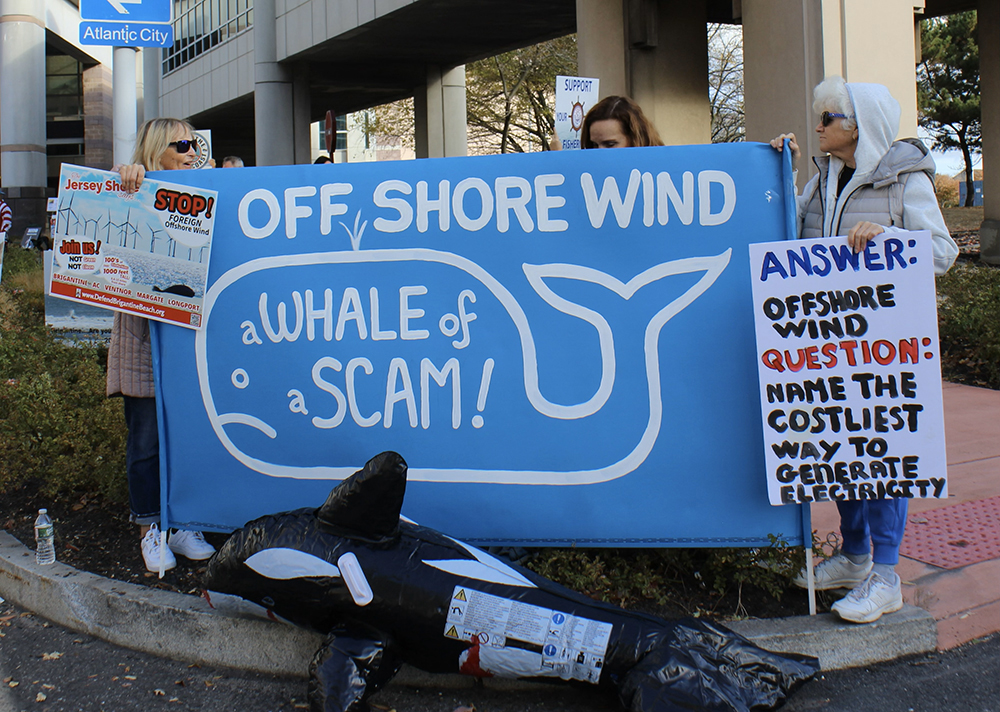Trump: Offshore wind will stop on Day 1
By Alex Brown,
New Jersey Monitor
Numerous East Coast states are counting on offshore wind projects to power tens of millions of homes and to help them transition to cleaner energy.
But putting wind turbines at sea requires the cooperation of a powerful landlord: the federal government. Soon, that government will be led by President-elect Donald Trump, who has frequently disparaged offshore wind and said he will “make sure that ends on Day 1.”
In the eight states that have passed legal mandates to reach certain amounts of offshore wind power, Trump’s second term threatens those timelines.
“This is absolutely going to create problems for how we’re going to meet our emissions goals and the energy needs for the state,” said Massachusetts state Sen. Jamie Eldridge, a Democrat who serves as vice chair on the legislative Joint Committee on Environment and Natural Resources.
For many East Coast states that lack a large land base for extensive onshore development, offshore wind in federal ocean waters is central to their plans for a power supply that doesn’t use fossil fuels. Lawmakers in Connecticut, Maine, Maryland, Massachusetts, New York, North Carolina, Rhode Island and Virginia have established mandates requiring their states to produce certain amounts of offshore wind power in the coming years.

Photo by Julia Train
State leaders say they will continue to pursue offshore wind but realize there may be delays during the next four years.
In the meantime, some say they will continue to build out the needed electrical grid and ports to get ready for turbines, in hopes of speeding up offshore wind once Trump’s term ends. Others say they may need to consider building more onshore energy projects, including wind and solar, in the next few years to meet near-term climate goals.
“That’s something states will have to take into account,” said Dylan McDowell, executive director with the National Caucus of Environmental Legislators, a collaborative nonpartisan forum for state lawmakers. “Is [offshore wind] still feasible, or do there need to be conversations about solar, [onshore] wind, geothermal, other energy sources that could be put into the mix to help meet those goals? There’s more questions than there are answers right now.”
While a handful of offshore wind projects have already started construction or been completed, many more are in various stages of permitting or awaiting lease auctions held by the federal Bureau of Ocean Energy Management. Industry experts say the Trump administration could deny permits, cancel pending leases and halt further auctions. It could also threaten the industry’s financing by denying clean energy tax credits.
Trump has repeated claims that offshore wind turbines are a major cause of whale mortality — an assertion that scientists say is false. Many of the groups raising concerns about whales to oppose offshore wind are funded by oil and gas donors.
Trump’s transition team did not respond to an interview request before publication.
Offshore wind also has drawn local opposition from coastal residents who fear it will worsen their views and from fishermen who worry projects could block access to key fishing areas. Meanwhile, some Republicans have pointed to the wind industry’s recent financial struggles to argue that it will increase ratepayers’ bills.
“[T]he business model for these projects has fallen well short of projections to the degree that those wind energy developers are either halting construction or asking the government for additional subsidies to make up for projected cost increases,” four Maryland Republican senators wrote to Democratic Gov. Wes Moore in April, unsuccessfully urging him to veto a financing package to boost offshore wind in that state.
Counting on offshore wind
States’ offshore wind goals were already facing difficulties. Numerous projects were canceled or delayed last year as inflation and supply chain issues raised costs dramatically. Now, political headwinds could cause greater delays.
Developers of other projects are working to finalize financing or permits, and wind companies are awaiting federal lease auctions that will open up new areas for development. In total, the project pipeline for offshore wind exceeds 80 gigawatts, according to the National Renewable Energy Laboratory — enough to consistently power more than 60 million homes. The incoming administration could thwart most of that production by denying development permits or leases in federal waters.
East Coast states don’t have a viable way to meet their clean energy goals without that offshore production, said Maryland state Del. Lorig Charkoudian, a Democrat who authored a law last year that increased the state’s offshore wind targets.
“We’ll continue to support the ongoing development of offshore wind until we have to make other adjustments,” she said.
In New Jersey, state leaders are working to construct 11 gigawatts of offshore wind by 2040.
“[Trump] is a serious threat to New Jersey’s goals,” said state Sen. Bob Smith, a Democrat who chairs his chamber’s Environment and Energy Committee.
Still, he noted that the country’s rapidly expanding energy needs, driven by data centers and artificial intelligence, could make it difficult for Trump to shut down any new sources of electricity.
“Our economy will not function without that additional generation capacity,” Smith said. “Capitalism always finds a way.”












